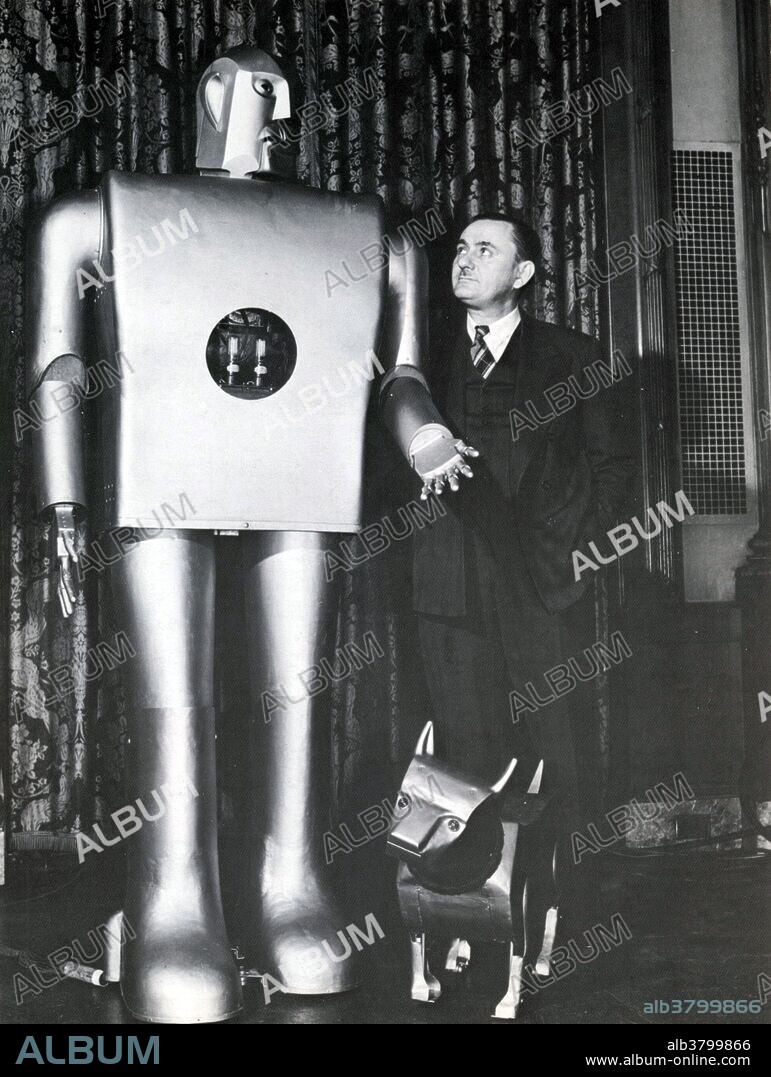alb3799866
Electro and Sparko, 1939 World's Fair

|
Añadir a otro lightbox |
|
Añadir a otro lightbox |



¿Ya tienes cuenta? Iniciar sesión
¿No tienes cuenta? Regístrate
Compra esta imagen

Título:
Electro and Sparko, 1939 World's Fair
Descripción:
Ver traducción automática
Electro the motor man and Sparko with creator J.M. Barrett New York Worlds Fair 1939. These animatronic wonders marked the first time that electric motors were used to power and actuate robots. The term "robot" was first used to denote fictional automata in a 1921 play R.U.R. by the Czech writer, Karel Capek. In 1928, one of the first humanoid robots was exhibited at the annual exhibition of the Model Engineers Society in London. Invented by W. H. Richards, the robot Eric's frame consisted of an aluminum body of armor with eleven electromagnets and one motor powered by a twelve-volt power source. The robot could move its hands and head and could be controlled through remote control or voice control. Westinghouse Electric Corporation built Televox in 1926; it was a cardboard cutout connected to various devices which users could turn on and off. In 1939, the humanoid robot known as Elektro was debuted at the 1939 New York World's Fair. Seven feet tall and weighing 265 pounds, it could walk by voice command, speak about 700 words (using a 78 rpm record player), smoke cigarettes, blow up balloons, and move its head and arms. The body consisted of a steel gear, cam and motor skeleton covered by an aluminum skin. The branch of technology that deals with the design, construction, operation, and application of robots is robotics.
Crédito:
Album / Science Source / NYPL
Autorizaciones:
Modelo: No - Propiedad: No
¿Preguntas relacionadas con los derechos?
¿Preguntas relacionadas con los derechos?
Tamaño imagen:
3055 x 4056 px | 35.5 MB
Tamaño impresión:
25.9 x 34.3 cm | 10.2 x 13.5 in (300 dpi)
Palabras clave:
1930S • 1939 • ACONTECIMIENTO • AMERICA • AMERICANO • AUTOMATA • BLANCO Y NEGRO • CIENCIA • CURIOSO • ESTADOS UNIDOS DE AMERICA • ESTADOS UNIDOS • EXPO • EXPOSICION INTERNACIONAL • EXPOSICION UNIVERSAL • EXTRAÑO • FAMOSA • FAMOSO • FOTO • FOTOGRAFIA • HISTORIA • HISTORICO • HUMANOIDE • IMPORTANTE • INUSUAL • INVENCION • INVENTOR • NOVA YORK • PECULIAR • REINA • ROBOT • ROBÓTICA • S. XX • SIGLO XX • TECNOLOGÍA • TECNOLÓGICA
 Pinterest
Pinterest Twitter
Twitter Facebook
Facebook Copiar enlace
Copiar enlace Email
Email
